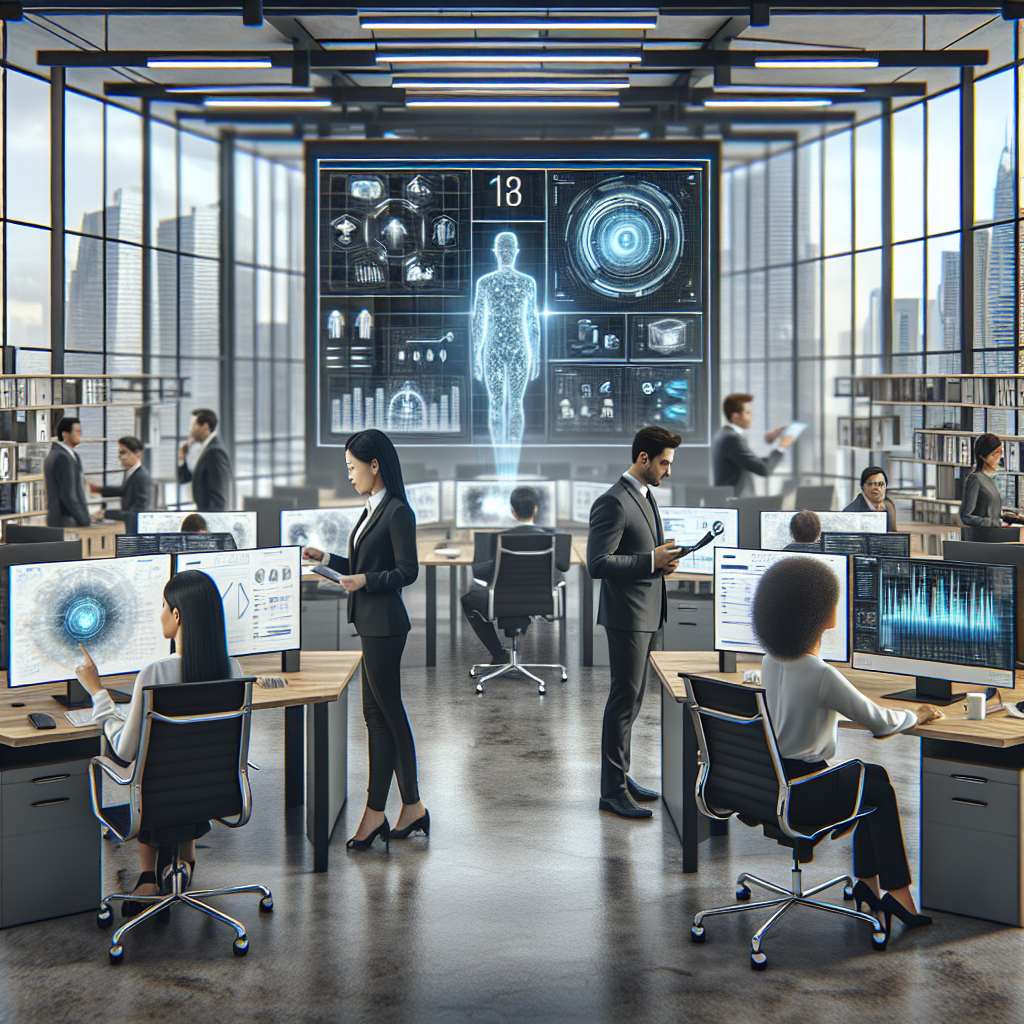Embracing AI Automation: Transforming the Future of Work in 2025
As we move deeper into 2025, the workplace landscape is undergoing unprecedented change. Central to this evolution is AI automation, reshaping how businesses operate, how employees engage with tasks, and how industries innovate. For companies willing to adapt, AI automation offers immense opportunities to boost productivity, reduce repetitive work, and foster creative problem-solving. This shift is not just about machines replacing humans—it’s about creating a smarter, more efficient, and adaptive workforce that can thrive in today’s fast-paced economy. Understanding the practical applications and strategic advantages of AI automation will help organizations and individuals prepare for the future of work with confidence.
The Growing Impact of AI Automation in Modern Workplaces
Understanding AI Automation Technologies
AI automation refers to the use of artificial intelligence software and tools that perform tasks traditionally done by humans. These tasks can range from simple data entry to complex decision-making processes. Key technologies enabling AI automation include:
– Machine Learning: Systems learn from data to improve performance over time.
– Natural Language Processing (NLP): Machines understand and generate human language.
– Robotic Process Automation (RPA): Automates rule-based repetitive tasks.
– Computer Vision: Enables image and pattern recognition.
By integrating these technologies, businesses streamline operations and reduce human error, ultimately enhancing efficiency and accuracy.
Statistics Highlighting AI Automation Adoption
Recent studies reveal a rapid increase in AI automation adoption:
– According to McKinsey, over 50% of companies have implemented some form of AI in their workflows as of 2025.
– Gartner predicts that AI automation will contribute to a 30% reduction in operational costs for early adopters.
– The World Economic Forum forecasts that AI will create 97 million new jobs by 2025, emphasizing a shift rather than job elimination.
These data points demonstrate AI automation is not a passing trend but a driving force in the future of work.
Advantages of Integrating AI Automation
Businesses embracing AI automation benefit in multiple ways:
– Increased Productivity: Automated systems operate 24/7 without fatigue, handling routine tasks swiftly.
– Enhanced Decision-Making: AI analytics provide insights that enable smarter strategies.
– Cost Efficiency: Reduced manual work means lower operational expenses.
– Employee Empowerment: Workers can focus on creative and strategic roles instead of mundane tasks.
Preparing the Workforce for AI Automation
Reskilling and Upskilling Employees
As AI automation executes routine duties, employees must evolve their skills to remain relevant. Focusing on reskilling and upskilling is crucial:
– Technical Training: Understanding AI tools and data literacy helps workers collaborate with automation.
– Soft Skills Development: Creativity, critical thinking, and emotional intelligence become more valuable.
– Continuous Learning: Encouraging a growth mindset ensures adaptability in the changing workspace.
Educational institutions and companies can partner to provide tailored training programs that meet future demands.
Fostering a Collaborative Human-AI Environment
AI automation is most effective when humans and machines work together seamlessly. Cultivating a collaborative environment involves:
– Clear Role Definitions: Establish which tasks are best suited for AI and which require human judgment.
– User-Friendly AI Interfaces: Simplify AI tools to encourage adoption and reduce resistance.
– Feedback Loops: Involve employees in refining AI processes based on their insights.
This balance enhances productivity while maintaining human creativity and oversight.
AI Automation’s Role in Different Industries
Manufacturing and Supply Chain Optimization
Automation has revolutionized manufacturing by enabling robotics and AI-driven quality control:
– Predictive Maintenance: AI analyzes equipment data to prevent breakdowns.
– Inventory Management: Automated systems optimize stock levels in real-time.
– Enhanced Safety: Robots handle hazardous tasks, reducing workplace injuries.
These advancements lead to cost savings and faster production cycles.
Healthcare Transformation Through AI
The healthcare sector leverages AI automation to improve patient care and administrative efficiency:
– Diagnostic Assistance: AI tools analyze medical images more rapidly than humans.
– Appointment Scheduling: Automated systems reduce no-shows and manage patient flow.
– Drug Discovery: Machine learning accelerates identifying potential treatment compounds.
AI not only enhances outcomes but makes healthcare more accessible.
Financial Services and AI Automation
Automation reshapes finance by automating transaction processing, fraud detection, and customer service:
– Robo-Advisors: Provide customized investment advice at scale.
– Risk Assessment: AI evaluates creditworthiness with greater accuracy.
– Chatbots: Offer instant, 24/7 customer support improving satisfaction.
Businesses that adopt these technologies gain a competitive edge in speed and accuracy.
Implementing AI Automation: Step-by-Step Guide
Step 1: Assess Business Processes
Identify repetitive, time-consuming tasks ideal for automation. This prioritization ensures resources focus on high-impact areas.
Step 2: Choose Suitable AI Tools
Select automation technologies aligned with your objectives and existing systems. Consider scalability and user-friendliness.
Step 3: Pilot and Test
Start with small-scale implementation to gather feedback and measure performance. Iterate based on results to refine AI workflows.
Step 4: Train Employees
Provide comprehensive training to ensure smooth adoption and address concerns. Promote a culture of openness to innovation.
Step 5: Scale and Optimize
Expand AI automation gradually across departments, monitoring outcomes and adjusting strategies to maximize benefits.
Best Practices for Sustainable AI Automation
– Maintain Transparency: Communicate clearly how AI impacts roles and business goals.
– Ensure Data Privacy: Protect sensitive information in AI systems.
– Monitor Ethical Use: Avoid biases and unfair practices in AI algorithms.
– Encourage Employee Involvement: Include teams in decision-making to foster ownership and trust.
These principles help build lasting success with AI automation.
Looking Ahead: The Future Potential of AI Automation
AI automation continues to evolve rapidly, offering new opportunities such as:
– Autonomous Workflows: Fully automated end-to-end processes with minimal human input.
– Personalized Work Experiences: AI tailoring tasks and learning paths based on individual strengths.
– Enhanced Creativity: Machines assisting with idea generation and problem-solving.
Staying informed and adaptive will be key to harnessing these advancements for growth and innovation.
Embracing AI automation is no longer optional but essential for thriving in the future of work. By understanding its benefits, preparing the workforce, and implementing thoughtful strategies, businesses can unlock unprecedented efficiency and innovation. Take the first step toward transforming your operations today by exploring expert solutions at https://automatizacionesaiscend.com. Empower your team and future-proof your organization in this new era of intelligent automation.



